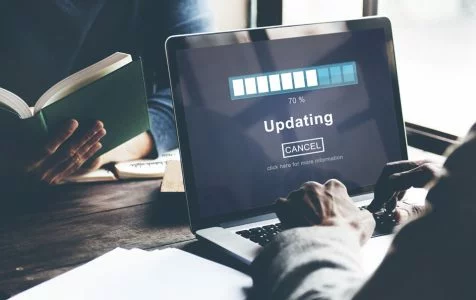In today’s digital-first world, a school’s website serves as a crucial point of contact for prospective students, parents, and the community. An outdated or poorly maintained website can hinder communication and lead to missed opportunities for engagement and enrollment. However, maintaining a website can often seem daunting, especially for schools with tight budgets. In this blog, we’ll explore practical and affordable strategies to keep your school website updated and relevant.

Table of Contents
Toggle1. Establish a Maintenance Schedule
Creating a regular maintenance schedule is essential for ensuring your school website remains current and functional. A simple approach could include:
- Monthly Updates: Review and update content, including news, events, and academic calendars.
- Quarterly Reviews: Conduct a more thorough assessment of the website, including checking for broken links, outdated information, and compliance with accessibility standards.
- Annual Overhaul: Dedicate time for a complete redesign or major updates to keep the site visually appealing and aligned with current trends.
2. Leverage User-Friendly CMS Platforms
Using a user-friendly Content Management System (CMS) like WordPress, Joomla, or Weebly makes it easier for non-technical staff to update the website. These platforms offer intuitive interfaces that enable administrators to:
- Add and edit content easily.
- Upload images and videos without technical expertise.
- Install plugins for added functionality (like calendars or event management).
Selecting an affordable CMS solution can significantly reduce maintenance costs while empowering staff to take ownership of content updates.
3. Train Staff and Students
Empowering staff and students with the skills to update the website can save time and resources. Consider:
- Training Sessions: Organize workshops to teach staff how to navigate the CMS and update content effectively. This can be done in collaboration with local tech experts or through online resources.
- Student Involvement: Engage tech-savvy students by allowing them to contribute content or manage certain sections of the website. This not only lightens the load for staff but also encourages student engagement.
4. Create a Content Calendar
A content calendar helps plan and organize updates, ensuring that important information is published in a timely manner. Key elements to include in your content calendar are:
- Event Announcements: Schedule updates for upcoming events, such as open houses, parent-teacher meetings, and extracurricular activities.
- News Updates: Plan regular posts about student achievements, faculty highlights, or community initiatives.
- Seasonal Updates: Prepare content in advance for significant holidays or academic milestones.
By proactively planning content, you can streamline the update process and ensure that your website remains vibrant and engaging.
5. Use Affordable Tools and Services
Several affordable tools and services can help streamline website maintenance:
- Website Monitoring Tools: Services like UptimeRobot or Pingdom can alert you when your website goes down, ensuring minimal disruption to your online presence.
- SEO Tools: Utilize tools like Google Analytics and Yoast SEO (for WordPress) to monitor website performance and optimize content for search engines, making it easier for families to find your school online.
- Affordable Hosting Providers: Choose a reliable and cost-effective hosting service that offers good support and regular backups. This can help prevent downtime and data loss.
6. Engage Your Community
Engaging your school community can generate fresh content and ideas for updates. Encourage involvement through:
- News Submissions: Invite parents, teachers, and students to submit news articles or stories about school events. This can diversify content and strengthen community ties.
- Feedback Mechanisms: Implement feedback forms on your website to gather suggestions for improvements or topics of interest to the community.
This collaborative approach can help keep your content relevant and appealing while fostering a sense of ownership among stakeholders.
7. Monitor and Analyze Performance
Regularly reviewing website performance can help identify areas for improvement. Use analytics tools to:
- Track visitor behavior and popular content.
- Identify pages with high bounce rates that may need updating.
- Monitor referral sources to see where visitors are coming from, allowing you to tailor content to meet community interests.
By analyzing this data, you can make informed decisions about what updates are necessary and where to focus your efforts.
8. Consider Professional Help When Needed
While many maintenance tasks can be handled internally, there may be times when professional help is warranted. Consider budgeting for occasional expert assistance for tasks such as:
- Major website redesigns.
- Troubleshooting complex issues.
- SEO audits to improve search engine visibility.
Look for local freelancers or agencies that offer affordable rates for educational institutions. Collaborating with a professional can ensure your website meets best practices without straining your budget.
Conclusion
Keeping your school website updated doesn’t have to be a daunting or expensive task. By establishing a maintenance schedule, leveraging user-friendly tools, engaging your community, and analyzing performance, schools in Agra can maintain a vibrant online presence that effectively communicates with parents, students, and the wider community. Investing time and effort into affordable website maintenance will not only enhance your school’s reputation but also contribute to increased engagement and enrollment in the long run.


No responses yet